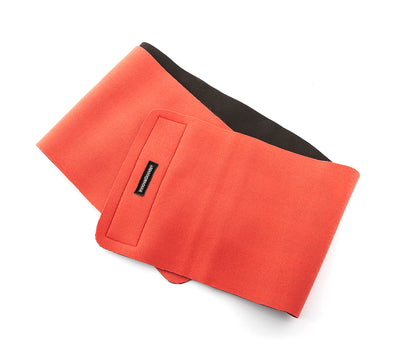Plank: One Minute Exercise For a Strong Body and Sharp Mind
Pursuing your ambitious career goals often comes with a sedentary lifestyle. And the global pandemic only made things worse for those who spent most of their time at work. So we've experienced all the benefits of working from home together with all the negative consequences. According to the research, people have reduced their workout duration by 30 minutes per week and increased sedentary time by 33 minutes per day.
And if you are still prone to spending most of your day sitting, we have an exercise that may reverse your workout routine. Continue reading to learn why plank is a favorite exercise of most fitness trainers and how it may help your stay fit even with the busiest schedule.
What is a plank, and why is it so convenient to do?
Many exercises you can find in workout plans and get from gym trainers are time-consuming and often require additional equipment. But when it comes to a plank, your body and gravitation are everything you need! The primary purpose of this workout is to strengthen your core muscles from the spine to the shoulders while boosting your overall endurance and making you fitter.

When doing a plank exercise, you should stand as if you are going to do push-ups. Next, your hands and feet should rest on the floor with palms shoulder-width apart while your back and pelvis form one straight line. Then you need to freeze in this position for 10-20 seconds. Sounds easy, doesn't it? Plus, you can perform it anytime since this exercise will take you so little time: before breakfast or after a long workday, a plank is always here for you.
How can a plank exercise improve your wellbeing and productivity?
You may think: "How can such a short workout contribute to my health and efficiency?" Despite its short duration, plank involves many muscles and makes your brain reach its limits in controlling them. Now let's discover which benefits plank can bring to your life!
Plank reduces work-related pain and improves your posture
Are you struggling with back or neck pain after numerous hours of sitting? Then you're not alone — 50% of professionals report back pain each year. Then plank may be the perfect exercise for you! An International Journal of Science and Research survey has found that it decreases low back pain and helps align your posture.
However, if you're doing a plank in the wrong way, it can worsen your back pain; that's why it's essential to follow the instructions. On the other hand, a plank is less time-consuming than massages and other workouts, so don't be afraid to try it. Plus, good posture will contribute to your self-confidence and make you look even more professional and self-collected to your colleagues.
Plank makes your whole body fitter
Have you ever performed a workout without a trainer? Then you should know how hard it is to pick exercises to load all muscles evenly. But plank is among those multipurpose exercises that involve many muscles and strengthening the whole body. The core muscles that the body uses in a plank are abdominal muscles, low back, and abs. Plus, you’re also boosting your arm and leg muscles since they’re responsible for holding your body mass.

By the way, were you dreaming of getting those rock-solid abs that all athletes have? Then you should definitely incorporate plank in your workout routine! Of course, doing planks alone won't give you a six-pack. But if you combine this exercise with a balanced diet and other abs workouts, you’ll see the results shortly.
Plank speeds up your metabolism
When you have a sedentary lifestyle, one of your darkest wishes can be eating and never getting fat. And that's where plank will work in your favor. Numerous studies claim that plank is among the best workouts to burn more calories. For example, by doing a plank drag exercise, you'll burn 12 calories per round. Of course, it doesn’t mean you can start eating french fries between plank rounds and get zero fat. It’s just a convenient way to support your energy metabolism if you don’t have much time for gym visits.
Moreover, planks boost your core muscle strength, which means you'll have a higher metabolic rate after finishing your workout. So by performing plank daily, you increase your muscle mass and the number of calories your body burns throughout the day. This exercise will be beneficial if you spend most of your days sitting behind your desk since people with a sedentary lifestyle have an overall lower metabolic rate. Definitely worth a try if you care about your figure!
Plank increases your focus
What's the most complex task when performing planks? First, it’s not to give up after a few seconds and keep the right pose during the exercise. Also, when standing in a plank, your body may shake, and your arm and leg muscles may burn. But that's not a sign for you to stop doing it! That means you're only starting to improve your body. So people who manage to continue doing a plank with all those symptoms develop stronger willpower and focus, which may help them outside the workout.

Plank helps you relieve stress and enhances your mood
Sometimes your work-related stress leaves no room for productivity in your brain. It not only makes you worried about possible procrastination but also induces excessive tension. All the above makes you feel sick and dizzy at your workplace. And one of the most effective remedies to fight stress is to move around a bit — Mayo Clinic research claims exercises allow you to destress effectively.
Since plank is an exercise that involves many muscles, your body will produce more endorphins, elevating your mood and reducing the symptoms of burnout and depression. This exercise works so that you won’t be able to think about anything except keeping your back straight and enduring a few more seconds. So if you feel like you need to blow off some steam without going to the gym quickly, then try to perform a plank. It will help you freshen up, get more confidence in your strengths, and become present at the moment.
The most effective plank poses you should try
Another fantastic benefit of the plank is that it features diverse poses and moves, so you'll never get bored when practicing it. Plus, by trying different poses, you involve more muscles in the process, making your body even more robust. So let’s learn more about the most efficient plank poses!
Static planks:
1. Plank on elbows
It's a primary plank pose that is great for building stamina and muscles. Plus, it helps you prepare your body for the more complex plank poses. When performing it, get into a push-up position with your elbows on the floor. Place your elbows shoulder-width apart and make sure your shoulders, hips, and knees are straight. Don't lower your hips or hunch over — such changes in posture can lead to injury and subsequent pain.

When you're in the right pose, freeze for 10-20 seconds. Feel your abs and pelvic strained while your heart beats faster. If you're doing it for the first time, it's okay to give up when your body aches. Next time, you'll be able to hold for a longer time!
2. Plank on outstretched arms
Now it's time to complicate things a little! After trying the plank on elbows, you can go on with performing it on outstretched arms. Your pose stays the same except for the hands: you should straighten them, rest your palms on the floor, and place them shoulder-width apart. Make sure your shoulder blades are not up, then fix this pose for 10-20 seconds.
This pose is harder to hold since you need to maintain balance in your elbows. Plus, your chest muscles also get an additional load. By altering this pose with the plank on elbows, you manage to hold for a longer time, and it'll add diversity to the process.
3. Side plank
This outstanding plank pose is not so popular among athletes and plank practitioners. However, it employs the posterior abdominal wall muscle that plays an essential role in preventing back pain. You can alter this plank pose with two previous poses to strain as many muscles as possible.
When performing it, lay on your right or left side on the floor. Straighten and press your legs together, then stand on one of your elbows or balance on your palm. Meanwhile, your body should be straight from your back to your knees. Hold this pose for at least 10 seconds.

Moving planks:
1. Knee to elbow plank
When you can hold a static plank for a minute, then move on with performing moving planks. They're a bit harder but allow you to lose more calories and grow more muscles in the process. As for the knee to elbow plank, it strengthens your abs and hips flexors while stretching your legs.Stand in one of the static plank poses, then stretch your right knee toward your left shoulder, then repeat with your left leg. At the same time, try not to bend your back or raise your pelvis.
2. Shoulder taps
If you want to add more cardiac muscle tension to this exercise, then try the plank shoulder taps. This plank type requires you to maintain a good balance and makes breathing a little more difficult due to its intensity. However, it also improves blood flow and helps you grow shoulder muscles.
When standing in the plank on outstretched arms, take turns touching the left shoulder with your right hand and vice versa. At the same time, try not to swing too much to the sides or raise your hips.
3. Walking plank
Are you ready for a hardcore plank workout? In this case, a walking plank is what you need to push your limits. This plank exercise exerts additional stress on the shoulder, arm, and chest muscles — perfect if you want to build a strong upper body.

When standing in the plank on outstretched arms, start moving with your legs and arms. Make small moves with pauses to not fall or change the pose— your body should still form a straight line. For example, take five steps forward and five steps back, and repeat.
Tips for performing plank like a pro:
- Perform a plank with an empty stomach. It's better to stand in a plank before your meal because when you're full, it will be harder for you to hold for more than a few seconds. In addition, a hearty meal will make the body heavier and relax your muscles.
- Make it on a yoga mat or other non-slip surface. For example, when you're performing a plank, choose a non-slip surface as it will be a few times harder to hold a necessary pose while your legs slip away.
- Set a timer. You'll never know how many seconds you were standing in a plank unless you set up a timer. However, we don't recommend you to look at it in the process. The time spent in the plank passes more slowly, and by looking on a timer, you will make it last forever.
- Measure your progress. Becoming a plank pro can take you months, if not years. To increase the time spent in plank and feel your improvement, track your results in a particular app or planner. Write down the amount of time you spent and the type of planks you performed. Plus, you can also write down resting days when you'll be able to recover.
- Turn on your favorite video or soundtrack. Many people say that standing in the bar is boring. But what prevents you from making the process more exciting? Turn on your favorite video or soundtrack and enjoy it when performing a plank. This way, time will fly by faster, and your mood and motivation will get a fantastic boost.
Resources:
- A Mental Health Paradox: Mental Health Was Both A Motivator And Barrier To Physical Activity During The COVID-19 Pandemic (2021)
- Back Pain Facts And Statistics: 23 Essential Numbers You Need To Know (2020)
- Effectiveness Of Plank Exercise In Low Back Pain (2018)
- What Muscles Do Planks Work? How To Do A Proper Plank, According To A Personal Trainer (2019)
- Will Planks Alone Give You Six-Pack Abs? (2021)
- 5 Exercises That Burn A Ton Of Calories (2020)
- Researchers Reveal 10 Reasons To Do Planks Everyday (2019)
- Sedentary Lifestyle: Overview Of Updated Evidence Of Potential Health Risks (2020)
- Adult ADHD And Exercise (2021)
- Exercise And Stress: Get Moving To Manage Stress (2020)
- Exercise And Depression (2020)
- Side Plank: The Best Abs Move You’re (Probably) Not Doing (2019)
- Plank Knee To Elbow (2021)
- How To Do The Walking Plank (2017)








